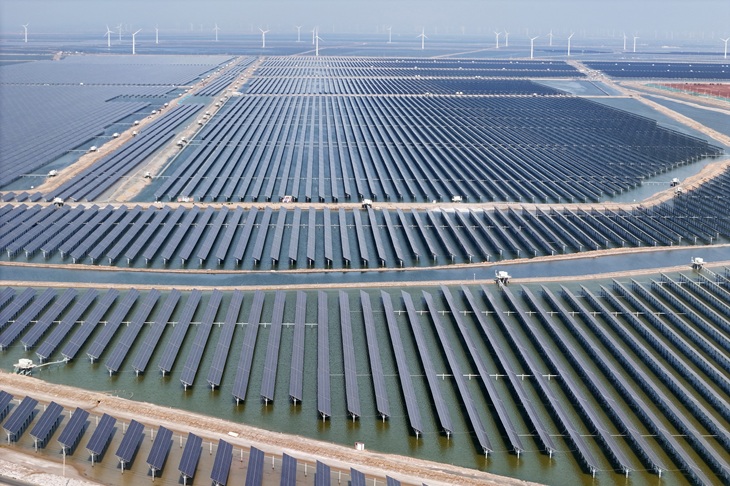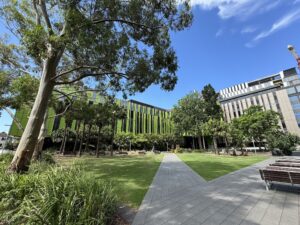
Solar panels and wind turbines are seen at the Huaneng Binzhou new energy power generation project in Binzhou, in China's eastern Shandong province on June 11, 2025. (Photo by AFP) / China OUT (Photo by STR/AFP via Getty Images)
In a world increasingly focused on the looming threats of climate change, the potential for natural disasters like asteroids and super volcanoes often gets overshadowed. While activists rally against carbon emissions and warmer climates, these genuine apocalyptic threats remain largely ignored. This oversight could have dire implications for our future.
Asteroids, flood basalts, and super volcanoes are the true repeat offenders when it comes to mass extinction events. Yet, there is little public demand for Australia to develop a robust space program to mitigate these risks. Meanwhile, other potential threats such as solar flares, magnetic pole reversals, and even artificial intelligence are rarely discussed in the context of existential risk.
Overlooked Natural Disasters
The conversation around climate change often eclipses discussions about other natural disasters that have historically wiped out life on Earth. For instance, the Late Ordovician mass extinction event, triggered by a massive asteroid impact, eliminated about 85% of the planet’s species. The Deniliquin structure in New South Wales, potentially the largest asteroid crater, serves as a stark reminder of these catastrophic possibilities.
According to Australian Geographic, this impact may have caused the Hirnantian glaciation stage, a significant glaciation and extinction event. Yet, such topics rarely make headlines compared to the daily discourse on carbon emissions and climate policy.
The Threat of Near-Earth Objects
Recently, the asteroid 2024 YR4, described as ‘skyscraper-sized,’ was on a potential collision course with Earth. Although it was discovered on its way out, the asteroid had a 3% chance of hitting Earth, later revised to a 4.3% chance of hitting the Moon. This incident highlights the fragile nature of our civilization, heavily reliant on satellite communications that could be disrupted by such events.
NASA’s research suggests that changes in Earth’s magnetic field, which have influenced atmospheric oxygen levels for millions of years, are not accounted for in current climate models. These findings underscore the complexity of Earth’s systems and the need for a broader understanding of existential risks.
Humanity’s Fragility in the Face of Natural Forces
As our technological empires grow, so does our vulnerability. Events that humans could have survived 10,000 years ago now pose significant threats to modern cities and nations. The asteroid that hit Siberia in 1908 serves as a reminder of the potential for devastation from space.
Asteroids slightly larger than 2024 YR4 strike Earth every 10,000 years, while larger ones, like those 5 km wide, hit every 20 million years. With Earth being 4.54 billion years old, the clock is ticking on humanity’s need to develop spacefaring capabilities to avoid extinction.
Investing in Real-world Solutions
While climate activists focus on reducing carbon footprints, there is a pressing need for governments to invest in infrastructure and redundancy strategies to withstand natural disasters. In Australia, for example, infrastructure in rural areas is often neglected in favor of renewable energy projects. This oversight leaves communities vulnerable to natural calamities.
Politicians frequently cite weather-related risks to justify significant spending, yet these funds rarely go towards enhancing safety and resilience against natural disasters. Instead, the focus remains on combating climate change, leaving us unprepared for other potential apocalyptic scenarios.
As the world grapples with the complexities of climate change, it is crucial to broaden our focus to include natural disasters that pose real threats to our survival. Investing in technologies and strategies to mitigate these risks is essential to safeguarding our future.







